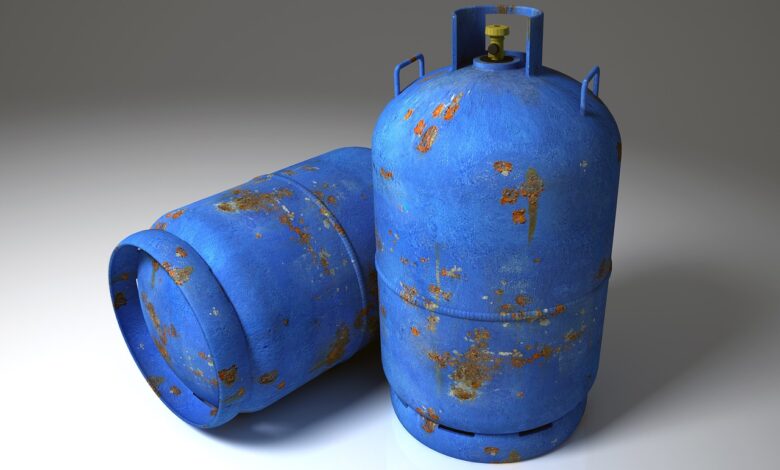Navigating the A2L Refrigerant Transition and the Role of Advanced Technical Ceramics in Industry Innovation

The shift to A2L refrigerants represents a significant change in the HVAC and refrigeration industries. At the same time, advanced technical ceramics are making waves across various sectors due to their unique properties. This article explores the A2L refrigerant transition, the benefits of advanced technical ceramics, and the latest industry innovations and trends shaping the future.
Understanding the A2L Refrigerant Transition
As environmental regulations tighten globally, industries must adapt to more eco-friendly solutions. The A2L refrigerant transition is one of the industry’s responses to growing environmental concerns, particularly around the impact of refrigerants on the ozone layer and global warming. For more information or to explore how this transition could affect your business, feel free to contact Gustave A. Larson for expert guidance and support.
A2L refrigerants are classified as mildly flammable and have a low Global Warming Potential (GWP). This makes them a preferred choice for HVAC systems, which traditionally used high-GWP refrigerants. The move towards A2L refrigerants is part of a broader push to comply with the Kigali Amendment to the Montreal Protocol, which aims to reduce the use of hydrofluorocarbons (HFCs) that contribute significantly to global warming.
What Sets A2L Refrigerants Apart?
While the transition to A2L refrigerants is being welcomed by many, it does require a shift in mindset and training. Because A2L refrigerants are mildly flammable, safety standards must be adjusted. This involves retraining technicians and rethinking HVAC system designs to accommodate these new refrigerants.
- Eco-friendly: A2L refrigerants have a GWP that’s significantly lower than older refrigerants.
- Mild flammability: Though flammable, A2L refrigerants are far less hazardous compared to other classes.
- Regulatory compliance: The transition is essential to meet global environmental targets, particularly in regions with stringent regulations like the European Union and the United States.
The Key Benefits of Advanced Technical Ceramics
While the HVAC industry grapples with refrigerant transitions, another material revolution is happening in various fields: the rise of advanced technical ceramics. Known for their durability, temperature resistance, and chemical stability, these ceramics are increasingly replacing traditional materials like metals and plastics in high-performance applications. These materials are particularly valued for their high heat resistance, wear resistance, and electrical insulation components, making them indispensable in industries that demand exceptional performance under extreme conditions.
Why Advanced Technical Ceramics Matter
Advanced technical ceramics, unlike traditional ceramics, are engineered to meet specific performance criteria. These materials boast a range of properties that make them ideal for use in industries such as aerospace, electronics, automotive, and medical.
Key benefits of advanced technical ceramics include:
- High-temperature resistance: Advanced ceramics can withstand temperatures far beyond what traditional materials can handle, making them ideal for aerospace and automotive applications.
- Chemical stability: They don’t corrode or degrade when exposed to harsh chemicals, which is crucial for industries like oil and gas.
- Electrical insulation: Advanced ceramics are excellent insulators, making them essential in the electronics and telecommunications sectors.
- Biocompatibility: In the medical field, advanced ceramics are used for implants due to their ability to integrate with human tissues without causing adverse reactions.
Fun Fact: Did you know that the concept of ceramics dates back to at least 24,000 years ago? Modern advanced ceramics, of course, are far more sophisticated and can be found in everything from jet engines to dental implants!
Industry Innovations and Future Trends
As both A2L refrigerants and advanced technical ceramics continue to gain traction, industries are seeing new innovations emerge. These changes are driven by both necessity and a desire to improve efficiency and performance in the face of environmental and technological challenges.
HVAC System Innovations for the A2L Era
With the introduction of A2L refrigerants, HVAC manufacturers are focusing on redesigning systems to ensure they are both energy-efficient and safe. New sensor technologies are being incorporated into systems to detect leaks or changes in refrigerant pressure, helping to mitigate any risks associated with flammability.
Another exciting development is the integration of IoT (Internet of Things) into HVAC systems. Smart HVAC systems can monitor performance in real-time, allowing technicians to adjust settings remotely and prevent system failures before they happen. These innovations are helping the industry navigate the A2L transition more smoothly while offering consumers better performance.
Advanced Ceramics: Driving the Future of High-Tech Industries
The aerospace and defense industries are perhaps the biggest beneficiaries of innovations in advanced ceramics. Ceramic matrix composites (CMCs) are being used in jet engines because they can withstand extreme temperatures while reducing weight. This leads to better fuel efficiency, which is crucial for both environmental and economic reasons.
In the medical field, advancements in bioceramics are enabling the development of new types of implants and prosthetics that integrate seamlessly with the body. Advanced ceramics are also seeing applications in 3D printing, where their ability to be shaped into complex forms at high precision is opening up new possibilities in manufacturing.
The Road Ahead: What to Expect
As we look toward the future, both the A2L refrigerant transition and the use of advanced technical ceramics will continue to evolve. Stricter environmental regulations will likely push more industries to adopt A2L refrigerants, and advanced technical ceramics will find new applications as material science progresses.
Here are a few trends to keep an eye on:
- Increased automation in HVAC systems: Expect more integration of AI and IoT to improve system safety and performance.
- New ceramic materials: Researchers are continuously developing ceramics with even higher temperature and chemical resistance.
- Cross-industry collaborations: We’re likely to see more collaboration between industries like aerospace and automotive as they explore the shared benefits of advanced ceramics.
Fun Fact: The strongest material in the world is a form of advanced ceramic called graphene. This ultra-thin material is 200 times stronger than steel!
The A2L refrigerant transition and the rise of advanced technical ceramics represent significant shifts in their respective industries. As companies adapt to more environmentally friendly practices and seek high-performance materials, these innovations will play a crucial role in shaping the future. By staying ahead of these trends, businesses can not only comply with regulations but also drive new levels of efficiency, safety, and performance.




